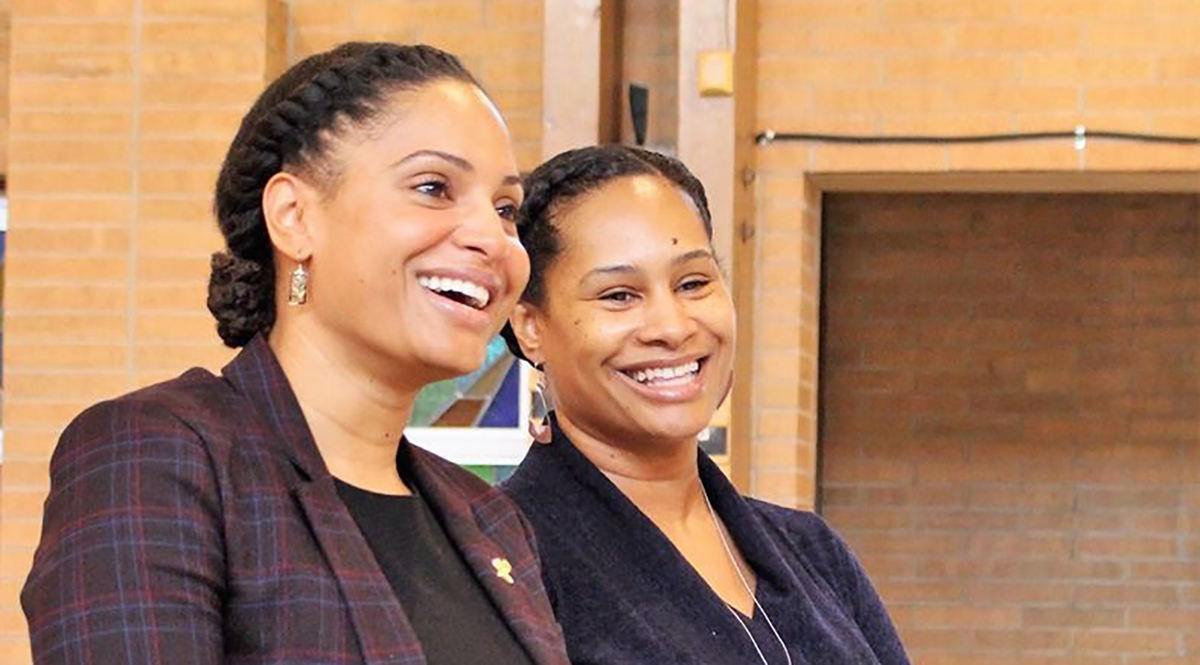
Editor’s note: The opinions expressed by the author do not necessarily reflect the opinions of the AAMC or its members.
To me, family — a major life influence and source of strength — includes not only my biological relatives but also my very large church family back in Detroit, Michigan. In fact, I feel as close to many of its members as to my own relatives. Over the past two months, COVID-19 has decimated leaders of my church, the country’s largest Black Pentecostal denomination. My father has lost seven of his fellow pastors, including a cousin. Watching him grieve as he receives phone call after phone call about friends who are sick or dying has been utterly heartbreaking and has shaken our sense of stability.
Our community is not alone. Racial and ethnic minority groups across the United States have been hit exceedingly hard by this pandemic.
Over my years as an emergency physician, I have repeatedly witnessed the disproportionate burden of chronic conditions such as diabetes, cardiovascular disease, and hypertension among my minority patients. Even my own husband died of a heart attack in his 30s. Countless research studies in numerous fields support my personal experiences. It’s therefore no surprise — yet it is still terribly disheartening — that COVID-19 has so severely impacted people of color.
National data reveal that the COVID-19 death rate is six times higher in areas that are predominately non-White as compared to areas that are predominately White. In the nation’s capital, where I live, Black residents represent less than half the population but nearly 80% of COVID-19-related deaths. Meanwhile, Latinx populations have the highest per capita infection rates in the city. While more data are needed, similar patterns are emerging across the United States.
As I grapple with this reality both personally and professionally, I can’t help but ponder the root causes of these inequities — and the opportunities we have to address them.
In the nation’s capital, where I live, Black residents represent less than half the population but nearly 80% of COVID-19-related deaths.
Experts point to the uneven prevalence of chronic diseases that make COVID-19 more dangerous and the role that social factors — access to healthy food, housing, and employment among them — play in these diseases. In addition, social distancing often is a privilege. Only 16% of Latinx workers and 20% of Black workers can telework compared to 30% of White workers, increasing minority communities’ exposure to the virus. It’s important to note that these social determinants of health are not a function of choice or chance — they are inextricably linked to a long history of racial segregation and structural racism.
Our society has much work to do to bring healing and justice to people of color, and academic medicine has a key role to play in this process. As a medical community, we must ask ourselves two vital questions: What part have we played in creating, exacerbating, and sustaining health disparities? And what steps can we take to rectify the unjust and disheartening disparities both in COVID-19 and other illnesses?
Our role in exacerbating health disparities
The history of discrimination in how we study and treat people of color is long. The unconscionable gynecological experiments of J. Marion Sims, MD, on enslaved Black women, the notorious Tuskegee experiments, and the research on Henrietta Lacks without consent all justifiably increase people of color’s concern about the impact of this pandemic on their communities.
There are more recent reasons for concern as well. These include biases in our health care and public health systems regarding the treatment of pain and dangerous conditions such as heart disease and cancer. Among other evidence, research shows that some graduating medical students believe Black people don’t experience pain the same way as other races do.
Soon after the novel coronavirus hit the United States, myths began to circulate that Black people were immune to it, a notion similar to racist beliefs among physicians in the mid-1700s that led to the deaths of hundreds of Black people from yellow fever. Unfortunately, the circulation of such falsehoods and individuals' real experience with bias may cause people of color to question important medical and public health recommendations during the pandemic.
Weeks before there was evidence of COVID-19 disparities, a national survey showed that more Black people considered the virus a major threat to their health compared to other racial groups. At least some must have worried that if they did get sick, they wouldn’t get the same care as their White counterparts.
In fact, evidence of pandemic-related bias in today’s health system has already emerged.
In Memphis, three testing sites in predominately Black neighborhoods did not have the supplies to test patients, while sites in nearby White neighborhoods were fully functional. In Philadelphia, there are more testing sites in high-income neighborhoods compared to low-income neighborhoods where more people of color live. In seven states, Black people presenting with fever and cough were less likely to receive a referral for a COVID-19 test compared to White residents. And finally and disturbingly, new Crisis Standards of Care recommendations created to guide the distribution of such resources as ventilators and intensive care unit beds do not take into account the disproportionate prevalence of chronic disease among minority populations.
Our role in addressing health disparities
There is much we can — and must — do to address health inequities in this country.
For individual physicians on the front lines of this pandemic, our role is to understand that everyone, even the most well-meaning person, has biases. We must acknowledge them and employ strategies to mitigate them in patient care. We must also speak up when we see unfair practices and policies within our institutions and help figure out ways to dismantle them.
Efforts to achieve equity will take time, and even after the pandemic abates, we must continue to work to reduce inequities between patient populations.
Our medical schools, teaching hospitals, and universities should partner with public health agencies and community organizations to ensure equitable access to testing and medical care. Institutions should prioritize delivering testing and health care to vulnerable communities and areas that have the highest burden of disease. In addition, teaching hospitals should collect data on race, ethnicity, and sociodemographic factors to better understand the care that COVID-19 patients are receiving and the results of that care. Then, we need to thoroughly and systematically address any health care disparities that are found.
We certainly should aim to improve COVID-19 health outcomes, but that is not enough. Efforts to achieve equity will take time, and even after the pandemic abates, we must continue to work to reduce inequities between patient populations and ensure that people of color are not denied vital resources.
Moving ahead, individual physicians should prioritize taking a course in unconscious bias to better recognize their own implicit assumptions. They also should work to learn how best to engage in dialogue with colleagues about racism and support efforts to mitigate it.
Meanwhile, medical schools and teaching hospitals should make sure to educate the next generation of physicians about the historical impact of structural racism, strategies to mitigate implicit bias, and ways to deliver culturally responsive care that address diverse patient needs.
In addition, we should broaden and strengthen partnerships with our communities to address the social determinants of health outside the walls of our institutions, and academic medical institutions should be a model to others of how to work with communities to improve health and reduce health disparities.
Finally, within our institutions and on our campuses, we must examine the social determinants of health that we can impact, such as employment and procurement practices that address racial wealth inequality.
Throughout all our efforts, we need to lead by example. Fortunately, our health systems offer many examples of learners and leaders actively employing these tactics to reduce disparities in health care and health outcomes. In my home state of Michigan, for example, Wayne State University School of Medicine faculty and students are partnering with the Detroit Health Department to provide COVID-19 testing in areas with the highest rates of COVID-19 infections and for populations who are homeless or live in nursing homes.
Each of us needs to be personally aware, institutionally committed, and community-partnered to create systems to detect and rectify unjust inequities for all populations.
In the District of Columbia, the George Washington University School of Medicine and Health Sciences, through the Rodham Institute, is providing meals to families in need, delivering virtual presentations to students in local public schools, providing masks for local correctional facilities, and working with local faith-based partners to answer questions about COVID-19. In addition, medical students are learning about social determinants of health and health disparities through their clinical public health curriculum with new elements specifically related to COVID-19. And the Ohio State University Wexner Medical Center and College of Medicine is offering implicit bias workshops for students, hospital employees, and admissions committees to provide real-time strategies to mitigate personal biases.
Championing equity in academic medicine is not an individual sport and will not be accomplished solely by good intentions. Going forward, each of us needs to be personally aware, institutionally committed, and community-partnered to create systems to detect and rectify unjust inequities for all populations. COVID-19 gives academic medicine an opportunity to lead and make rapid progress to reduce disparities in health and health care. We owe this to our patients, to our families, and to communities like mine where we are having to say goodbye to far too many people we love.
Listen to the season finale of “Beyond the White Coat,” as David Skorton, AAMC president and CEO, and Malika Fair, MD, PHD, discuss what forces are driving the racial disparities in health care access.
